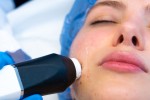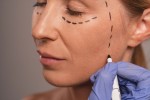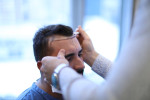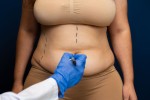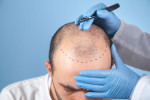Facelift recovery is a key phase of your transformation journey. Knowing what to expect helps ease concerns. Healing doesn’t happen all at once. Instead, it follows a timeline that’s fairly consistent. With the right care and expectations, your results can be smoother and more satisfying. These facelift recovery tips walk you through each stage, day by day.
What Happens in the First 24–48 Hours?
Right after surgery, you’ll likely feel groggy and tired. This is completely normal and expected. Additionally, swelling and bruising typically begin during this time. Your face may feel tight, and movement can feel restricted. Cold compresses and keeping your head elevated will help a lot. Pain is generally manageable with prescribed medication. Moreover, your surgeon might place drains to reduce fluid build-up.
It’s essential to rest as much as possible. Avoid any unnecessary movement and eat soft foods. You may also be advised not to wash your face for the first day or two. During this period, having someone to help you is strongly recommended.
Facelift Recovery Tips: Days 3–5 Tenderness and Visible Bruising
Bruising becomes more visible during this stage. However, this is a natural part of healing. The face may look swollen or puffy. This is when patients often feel alarmed, albeit needlessly. These symptoms do not reflect your final results. Instead, they show your body is responding as it should.
Facial tightness may persist, but it will begin to reduce soon. Likewise, any discomfort generally improves with each day. Use your prescribed pain relief as instructed. Furthermore, it’s important to avoid bending or lifting heavy items.
Facelift Recovery Tips: Days 6–7 Stitches and Dressings Removed
Usually, stitches and bandages are removed around day seven. This step offers noticeable relief and comfort. You’ll likely begin to see the shape of your new look. Although swelling continues, bruising may start to fade.
This is a good time to resume very light daily tasks. However, avoid anything too active. Gentle walking is encouraged, as it helps with circulation. Additionally, hydration and a healthy diet will support healing. It’s vital to follow your surgeon’s instructions carefully.
Facelift Recovery Tips: Week 2 Reduced Swelling and Back to Work
By this stage, much of the swelling subsides. Although some puffiness may linger, the difference is clear. Many patients feel ready to return to work. Makeup can be used to conceal residual bruises, if needed. However, check first with your surgeon before applying anything.
Energy levels also tend to rise in week two. Despite this, strenuous activity should still be avoided. Moreover, sun protection is key to preserving your skin and results. These are crucial facelift recovery tips for this stage.

Facelift Recovery Tips: Week 3–4 Returning to Normal Activities
You’ll likely feel much more like yourself now. Additionally, visible swelling should be mostly gone. Some numbness or tingling may still persist. This is part of nerve regeneration and is not usually a concern. Your incisions will also begin to fade slightly.
Exercise and daily activities can slowly resume. Still, always check with your surgeon first. Swimming, running and weightlifting should be delayed until given the go-ahead. Emotional adjustment is another aspect of this stage. As you begin seeing changes, confidence tends to rise.
Facelift Recovery Tips: Weeks 5–6 Enjoying Your New Look
Now, your face should appear more natural and refreshed. Moreover, your incisions will continue to fade. Most patients feel confident being seen without makeup. Social activities often resume during this time.
Skin care can also be reintroduced gradually. However, it’s best to use gentle, non-irritating products. If you’re unsure, ask your aftercare provider for advice. Sun protection remains essential. Facelift recovery tips always emphasise avoiding sun damage during healing.
Facelift Recovery Tips: 2–3 Months Post-Op Long-Term Healing
Although major healing is complete, your body continues adjusting. Deep tissues heal more slowly. It’s not uncommon for minor swelling to linger. However, your appearance should be smooth, contoured and youthful.
Scars will continue to fade. Additionally, any remaining tightness usually resolves during this phase. You’ll likely attend a follow-up appointment to assess long-term progress. Continue using high-SPF sunblock and avoid harsh treatments or peels. Altogether, your care efforts now will protect your results long-term.
Facelift Recovery Tips: Final Results After 6–12 Months
By the one-year mark, you’ll see your final facelift results. Any lingering swelling should be fully gone. Scars will be soft and well-blended. The overall facial shape will appear lifted yet natural. Your surgeon may recommend touch-up treatments or maintenance facials.
Your lifestyle choices impact how long your results last. Therefore, a healthy diet and proper skincare are essential. Regular non-surgical treatments like facials can also support long-term appearance. These facelift recovery tips apply well beyond the initial months.
Lifestyle Tips to Support Healing
Besides rest and gentle activity, what you eat matters greatly. A nutrient-rich diet supports skin healing and reduces inflammation. Hydration is equally important. Furthermore, avoid alcohol and smoking, which can slow down recovery.
Emotional wellbeing also plays a role. So, take time for light walks, podcasts or books that calm your mind. Support from friends or family helps, especially in the first week. Lastly, patience is your best tool—healing takes time but delivers long-term results.
Conclusion
Facelift recovery follows a detailed yet manageable timeline. Understanding what happens each day helps you stay informed and calm. From the first 48 hours to your final reveal months later, each stage is important. By following these facelift recovery tips, you can achieve a smooth and satisfying transformation.
For more information on facelifts and to book a consultation visit the ACIBADEM Beauty Center Facelift webpage.
Frequently Asked Questions
Most healing occurs within 4–6 weeks, but final results take up to 12 months.
Yes, typically after 10–14 days, once wounds have closed and with your surgeon’s approval.
Many patients return to work by the second week, depending on bruising and confidence.
Scars fade over time and are usually hidden along hairlines and natural folds.
Elevation, hydration, and avoiding salty foods all help. Cold compresses also reduce inflammation.





